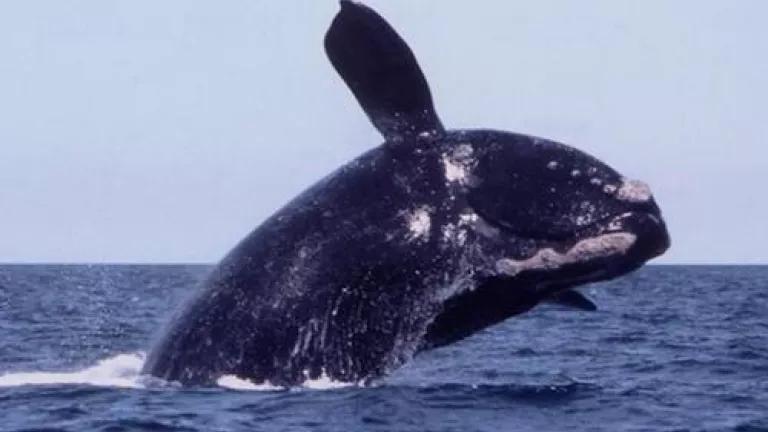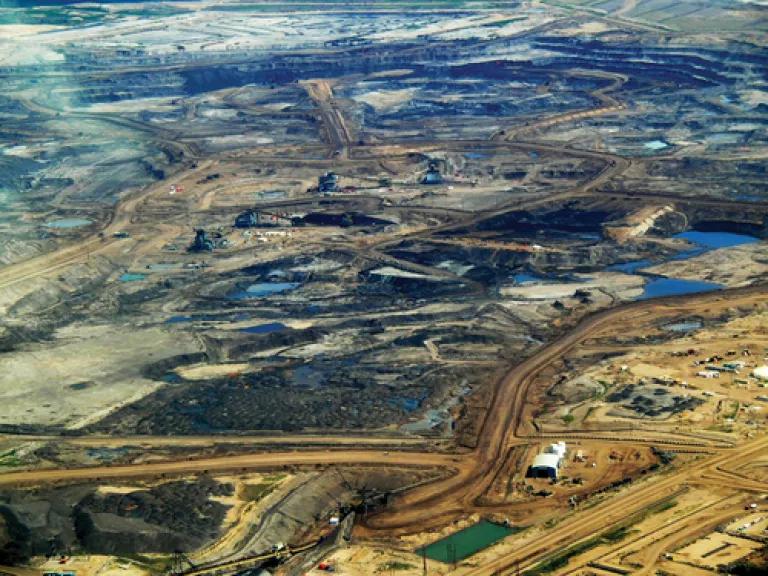TransCanada Drops Quebec Port in Move that Signals Beginning of Energy East Pipeline's End

TransCanada, the company behind the much beleaguered Keystone XL tar sands pipeline proposal, today announced that it would drop all plans for a Quebec-based port for its proposed Energy East tar sands pipeline and tanker proposal. This change, increasingly expected among those watching the project, comes in response to the company's earlier cancellation of plans to build a port on the St. Lawrence River, smack dab in the middle of critical breeding habit for the beluga whale. This latest amendment to its mega-tar sands project likely means it will plan on a single port in Saint John, New Brunswick. If this is indeed the course followed, it would place many of the project's most alarming impacts in the middle of the Bay of Fundy, one of the world's most unique environmental wonders, and home to critical fall and summer habitat of the world's 300-400 remaining North Atlantic Right Whales. This is because Energy East, unlike other well-known tar sands pipeline proposals, is really a pipeline and oil tanker proposal--a project relying on thousands of miles of pipe and nearly 300 oil tankers/year just to move its dirty tar sands to target markets on the U.S. East and Gulf Coasts. At the tar sands source in Alberta, Energy East could facilitate massive growth in the carbon-intensive tar sands industry, increasing its pipeline takeaway capacity by nearly 40% over existing levels.
North Atlantic Right Whale. Photo courtesy of the New England Aquarium.
TransCanada's proposed Energy East pipeline would begin in central Alberta, travel 2,860 miles across five provinces, and carry a whopping 1.1 million barrels of tar sands. While small volumes of tar sands from this pipeline are expected to feed refineries in Quebec, the bulk of the oil will be pumped all the way to New Brunswick where it will be stored in massive marine export terminals for loading onto oil tankers. TransCanada estimates that it will need at least 290 oil tankers to get this tar sands oil to markets, a fact that will seriously increase ship traffic in New Brunswick's Bay of Fundy, not to mention the increasingly sensitive Gulf of Maine. And while the Bay of Fundy has historically been subjected to oil tanker traffic due to Irving Oil's massive oil refinery in Saint John, it is the nature of the oil Energy East would carry as well as the increase in tankers that is cause for most alarm.

The Hopewell Rocks provide a reminder of the extraordindary tides of the Bay of Fundy. Photo courtesy of Yarmouth Mom Blog.
In the Bay of Fundy, 42 trillion gallons of tidewater rush into and out of the Bay every day, creating some of the world's most extraordinarily powerful tides. Depending on the dramatic nutrient exchange facilitated by these tides, numerous marine species thrive in the area, most notably 12 species of whale, porpoise, dolphin, seals, and numerous commercial fisheries. Putting diluted bitumen on the water in oil tankers puts all of this at risk. When spilled, tar sands oil has been shown to sink in marine environments due to its density, the mixing energy of waves, and the presence of silt in the water. As observed when tar sands spilled into the Kalamazoo River in Michigan, once tar sands sinks, it becomes nearly impossible to clean up, leading to long-term contamination. What's worse, studies testing common spill remediation methods such as treatment with chemical oil dispersants have shown that currently-existing dispersants do not work well on tar sands. With known tanker routes out of the Bay of Fundy crossing into U.S. waters in the Gulf of Maine, a second critical marine ecosystem is put at risk by Energy East. As recently chronicled in the Portland Press Herald, the Gulf of Maine is experiencing some of the most dramatic effects of climate change, including significant warming, acidification, and invasive species. Adding yet another threat to this critical ecosystem is an irresponsible and unnecessary risk.

The Alberta tar sands. Photo courtesy of Howl Arts Collective.
The marine impacts of Energy East are likely insurmountable hurdles to its ever being built. Nonetheless, a host of other challenges face TransCanada as it continues its desperate attempts to build massive oil pipelines in a climate constrained world. With the cancellation of a Quebec port, already-flagging support for the project in the province will almost certainly fall further as the economic benefits once-promised to Quebeckers disappear. Next door in Ontario, a recent provincial review of the project found that it would bring almost no economic benefits to the province, but would bring numerous environmental risks, especially from spills into freshwater and drinking water sources. Finally, with the Paris Climate talks now on the immediate horizon, Energy East's potential for expanding tar sands production--likely by close to 30% over today's production levels--means that it would lock in huge new volumes of carbon emissions that would undermine global efforts to stave off the worst effects of climate change.

